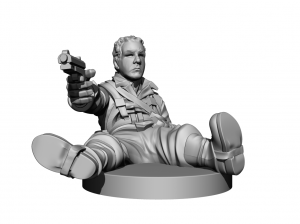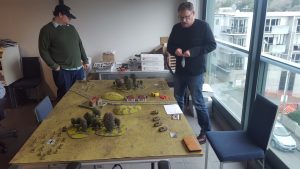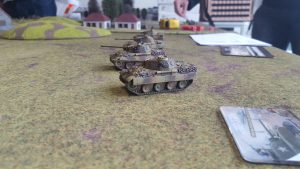with Evan Allen
All my figures are painted with the Vallejo range of paints. These are my personal suggestions only so please treat them as a guide and not “gospel”. I’ve also refrained from my usual technique of adding a little Deck Tan VP986 to the basic uniform colour and drybrushing highlights so you can see the actual colour more clearly.
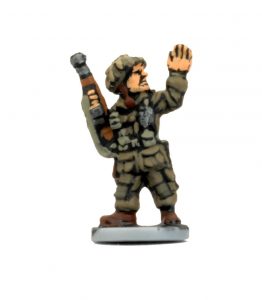
The first combat uniform issued to US Airborne troopers, the M1942, was purpose designed for Airborne troops by Maj. William Yarborough (who was also the designer of the US Airborne parachute wings). The design included features such as pockets cut on the diagonal to allow easy access while wearing webbing equipment and large, expanding, bellows style leg pockets that became a trademark of the wartime US airborne trooper. The M1942 uniform was used only by Paratroopers and wasn’t issued to Glider troops. The Paratroopers taking part in combat jumps in North Africa, Sicily, Italy and Normandy wore this uniform and even one battalion that jumped during “Market Garden” in Holland was still wearing this uniform.
This uniform was made from light 
The other colours I chose are:
| Uniform Piece | Vallejo Colour |
| Webbing & Equip. | Green Grey (886) |
| Helmet | US Olive Drab (887) |
| Helmet scrim | Khaki (988) |
| Weapon Furn. (wood) | Beige Brown (875) |
| Jump Boots E-tool handle Pistol holsters |
Flat Brown (984) |
The M1942 uniform was practical to wear in combat when it was warm but it offered no protection from the elements when the weather turned nasty. Also, being made from lightweight cotton, the knees and elbows tended to wear out quickly so many an airborne trooper bribed his unit parachute rigger to sew patches over the elbows and knees. The material commonly used for this was cotton duck from old parachute packs and was green in colour. I’ve painted patches on the elbows and knees of this figure over an otherwise standard M1942 uniform with US Dark green (893). You could even mix these with “unpatched” troopers for a bit of variety.
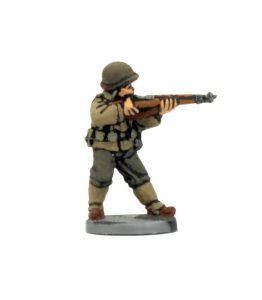
The Glider borne troops were basically standard infantrymen who woke up one day to find themselves called Glidermen, there were no calls for volunteers here! With a job equally as dangerous as their Paratrooper brothers they were denied the extra “jump pay” until just prior to the “Market Garden” landings when, finally, they achieved official recognition of the hazardous nature of their job. The uniform worn by these intrepid airborne soldiers was almost exactly the same as the “leg infantryman”. The only allowance for airborne duties was the issue of jump boots to a few fortunate troopers and, other than those few, they are the same as an ordinary infantryman in the M1941 uniform.
The colours I chose are:
| Uniform Item | Vallejo Colour |
| Jacket/leggings | Khaki (988) |
| Trousers | USA Field Drab (873) |
| Webbing | Green Grey (886) |
| Helmet | US Olive Drab (887) |
| Boots E-tool handle |
Flat Brown (984) |
The M1943 Uniform
After the US Airborne forces were withdrawn from Normandy they were refitted and brought back up to strength ready for the next mission. This included the widespread issue of the brand new M1943 olive drab uniform to the veterans of the 82nd and 101st divisions. This wasn’t just a paratroop uniform but the beginning of the US Army’s push to standardize the combat uniform. All airborne units received the M1943 uniform, even the Glider troops, but the paratroopers were quick to modify theirs by adding bigger
leg pockets.
The new airborne divisions arriving fresh from the States already wore this new uniform and it was the
uniform seen dropping from the sky, or climbing out of a glider, during “Market Garden” in Holland and
“Varsity” over the Rhine and into Germany proper.
This figure is painted as wearing the new M1943 olive drab uniform. The uniform colour I used is US Dark Green (893). The rest is the same as for the earlier paratroop uniform colours details. For all the airborne equipment, like mortars and bazookas etc. US Olive Drab (887)
as the US Army used pretty much the same colour of Olive drab on everything.
I hope I’ve given you enough to help get you started on painting your airborne force and also a feel for the kind of troops that you’ll be leading, I’m sure, to tabletop success whether from the sky or as elite “leg infantry” with a bit of Armour in support.

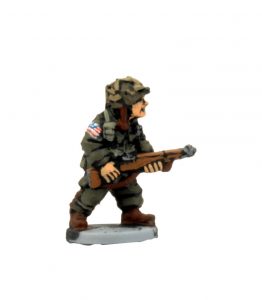
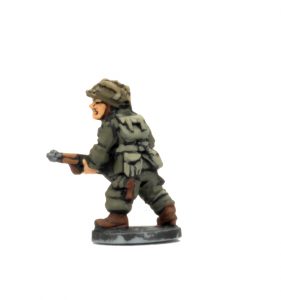
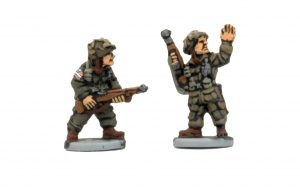
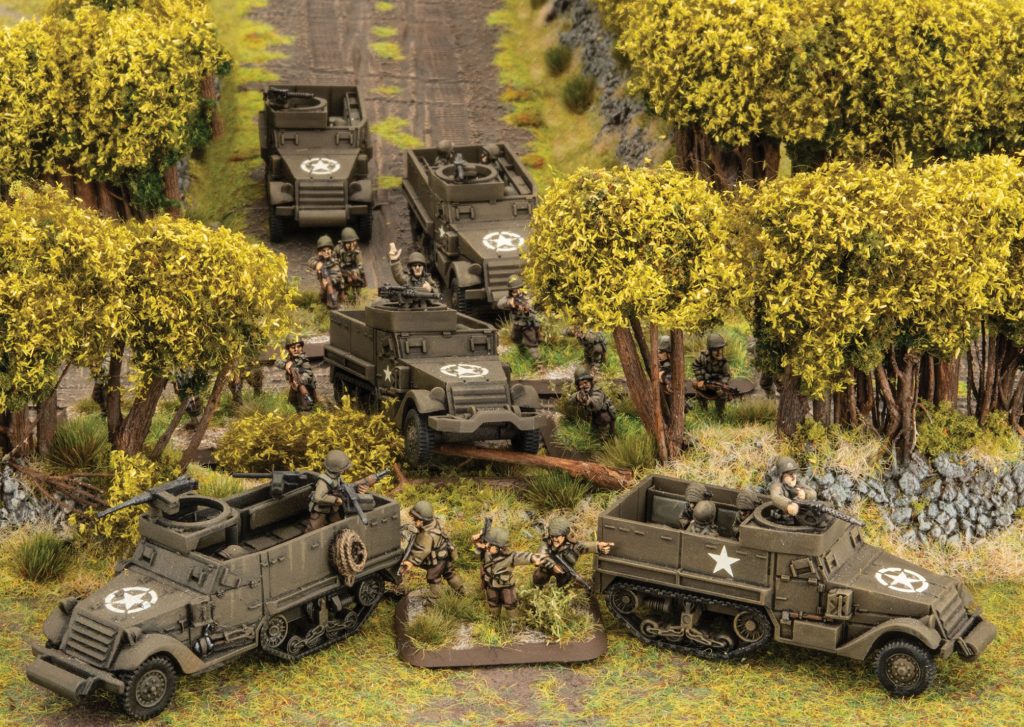
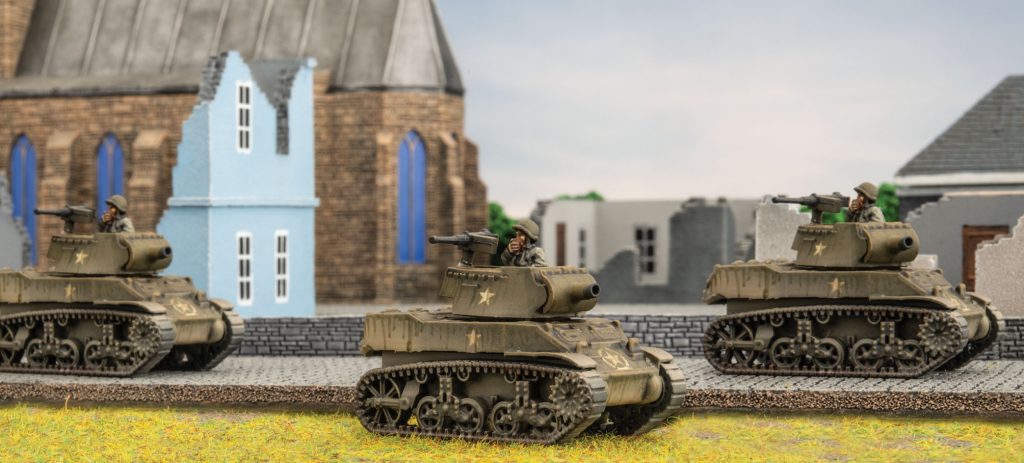

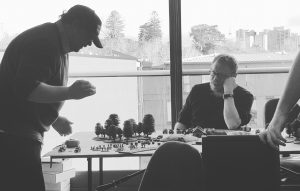 Meanwhile, Pete and I sat down to split a Jeep sprue between us and had a great bit of fun putting together this neat little kit.
Meanwhile, Pete and I sat down to split a Jeep sprue between us and had a great bit of fun putting together this neat little kit.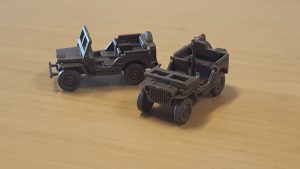
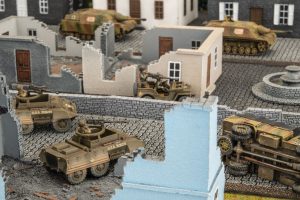
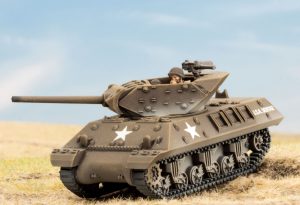 This leaves me with 17-points left to spend on support. Now I could have used those points to add 4 x M4 Sherman tanks, which I’ve already got assembled and painted from my Mid-War army, but instead I’m going with an M7 Priest Artillery Battery of 6, mainly for the smoke screen it can lay down to protect my M10s as they advance (or retreat) and to pulverize any enemy infantry they come across. With 1-point left it was time to peruse the Command Cards. I was tempted by the “Lucky” card from the command deck, but I just could not pass up the “2,000 lbs. Bomb Load” card for my P-47 Flight. With anti-tank 4 and fire power 2+, plus no penalty for having only 1 or 2 weapons firing, it seems like a winner to me and worth replacing my 500 lb. bombs and rocket load out.
This leaves me with 17-points left to spend on support. Now I could have used those points to add 4 x M4 Sherman tanks, which I’ve already got assembled and painted from my Mid-War army, but instead I’m going with an M7 Priest Artillery Battery of 6, mainly for the smoke screen it can lay down to protect my M10s as they advance (or retreat) and to pulverize any enemy infantry they come across. With 1-point left it was time to peruse the Command Cards. I was tempted by the “Lucky” card from the command deck, but I just could not pass up the “2,000 lbs. Bomb Load” card for my P-47 Flight. With anti-tank 4 and fire power 2+, plus no penalty for having only 1 or 2 weapons firing, it seems like a winner to me and worth replacing my 500 lb. bombs and rocket load out.
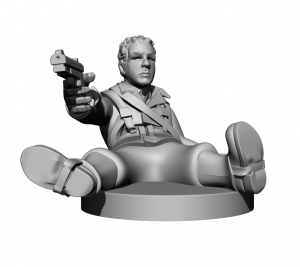 I took a little bit of liberty since it is inspired by the movie and not exact reproduction, and tilted his head back, and raised the pistol. This was done simply to make him look cooler and even more defiant. At this stage there are no details on the character yet, only the fold at the belt, and distortion on the webbing in the stomach area. These come in later. I already did some work on the face too. The amount of detail I am adding is way more than usual since something like a lip would be less than one tenth of a millimetre thick!
I took a little bit of liberty since it is inspired by the movie and not exact reproduction, and tilted his head back, and raised the pistol. This was done simply to make him look cooler and even more defiant. At this stage there are no details on the character yet, only the fold at the belt, and distortion on the webbing in the stomach area. These come in later. I already did some work on the face too. The amount of detail I am adding is way more than usual since something like a lip would be less than one tenth of a millimetre thick!